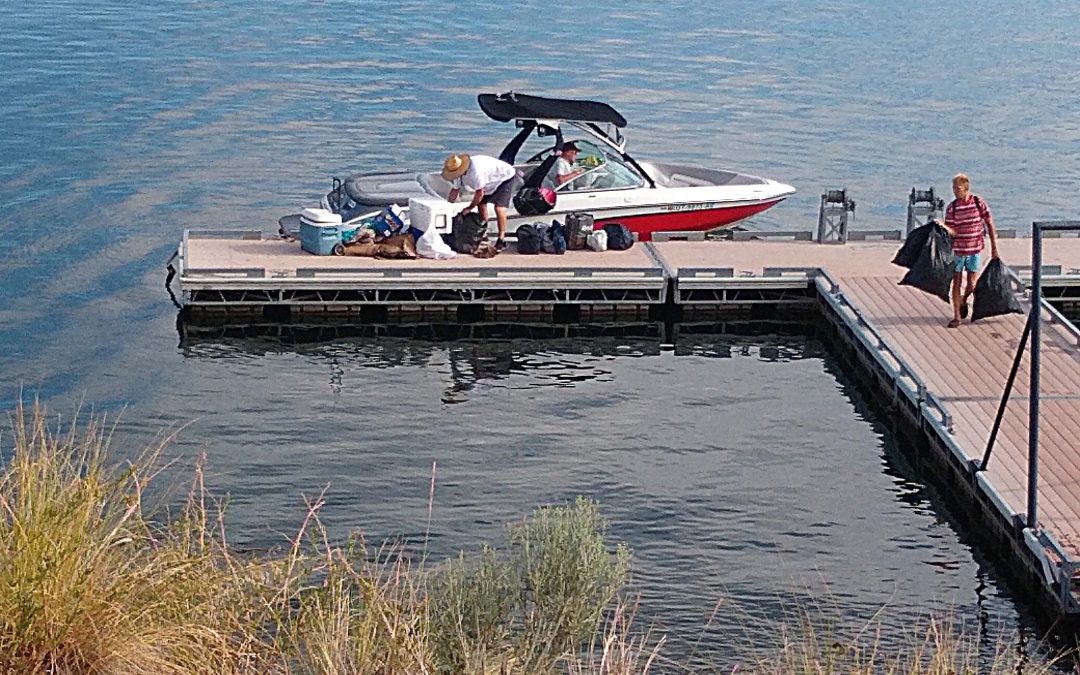With a new agreement to temporarily halt releases from Flaming Gorge Reservoir finalized this week, as much as 39,000 acre-feet of water that would have been released downstream will instead be held back in the reservoir that straddles the Utah-Wyoming border, now just 67% full.
That is the equivalent of enough water to serve at least 80,000 urban homes for one year or to irrigate some 20,000 acres of crops.
Water officials say the pause, though it’s a comparatively small amount of water, provides a reprieve for Flaming Gorge and allows more water to be held high in the Colorado River system, where it could offer more flexibility for use if it is needed later this year.
“We have good snowpack and we are less concerned that Lake Powell is going to reach [crisis] levels,” said Anne Castle, who is the U.S. Commissioner on the Upper Colorado River Commission. Castle, speaking to Colorado lawmakers March 1, was referring to minimum power pool at Lake Powell, at elevation 3,490 feet, the point at which reservoir water levels could no longer produce electricity for the millions of users across the basin who rely on it.
The news comes as federal water agencies and water users across the devastated, seven-state Colorado River Basin continue tense negotiations to approve a drought operations plan for 2023, a new temporary set of operating guidelines to help the river recover through 2026, and a federally mandated plan to permanently cut water use by roughly 20% this year to help bring the system into balance in the face of ongoing drought, overuse and lower flows due to climate change.
The Colorado River Basin is divided into two segments. The Upper Basin includes Colorado, New Mexico, Utah and Wyoming, while the Lower Basin includes Arizona, California and New Mexico.
Last week the Upper Basin states proposed the pause in releases and the Lower Basin states agreed, but an amendment to the 2022 Drought Response Operations Agreement, known as DROA, had to be signed by all parties before any change in releases could occur, according to U.S. Bureau of Reclamation spokeswoman Becki Bryant.

Source: U.S. Bureau of Reclamation
Releases from the Upper Basin reservoirs began in July of 2021, as levels in Lake Powell plunged in response to another year of ultra-low runoff in a drought cycle that has lasted since 2002.
Starting in 2021, 161,000 acre-feet of water was released from Flaming Gorge and Colorado’s Blue Mesa Reservoir to help bolster Lake Powell.
Starting in 2022, another 500,000 acre-feet in releases was authorized, but this time water has been taken just from Flaming Gorge. Colorado’s Blue Mesa was hard-hit by the first round of releases in 2021, and even now is just 36% full.
That second round of releases was originally planned to stop at the end of April 2023. Instead, releases will be paused this month.
How much, if any, will be released later this year as part of the 2023 drought operations plan hasn’t been determined yet. That is one of the big questions being negotiated now.
Before releases were paused this week, roughly 460,000 acre-feet of water had been released, according to Reclamation.
The move to pause the releases comes as Colorado, whose own segment of the river, along with the Yampa, Gunnison and San Juan/Dolores basins provides most of the water to the giant seven-state system, is enjoying statewide snowpacks of 123% of average, a signal that the drought-strapped system could see more water this year than had been predicted, according to the Natural Resources Conservation Service.
The pause should also provide some relief to the Upper Basin communities whose recreation economies are dependent on the storage pools.
Healthy snowpacks are also expected to help. According to the National Oceanographic and Atmospheric Administration, inflows into Flaming Gorge are projected to be 91% of average, while inflows into Blue Mesa are expected to be 105% of average.
At Flaming Gorge, for instance, March 1 reservoir levels have dropped, from 3.2 million acre-feet in the spring of 2020, down to 2.4 million acre-feet this past week, according to Reclamation. The reservoir is the largest in the Upper Colorado River Basin and holds 3.8 million acre-feet of water when full.
John Rauch, who operates a marina on the giant reservoir, said water levels are still dropping one-half to one inch per day. He and his staff have had to redo the marina’s power system and move docks multiple times since 2021 in anticipation of additional drops in the water level.
“I am hoping for the best and planning for the worst,” Rauch said. “It seems inevitable to me that the releases will start again. My worry is that we’ve had this major winter and people are getting lax. One big winter is not going to fix this drought.”
Jerd Smith is editor of Fresh Water News. She can be reached at 720-398-6474, via email at jerd@wateredco.org or @jerd_smith.
Fresh Water News is an independent, nonpartisan news initiative of Water Education Colorado. WEco is funded by multiple donors. Our editorial policy and donor list can be viewed at wateredco.org.


 Print
Print